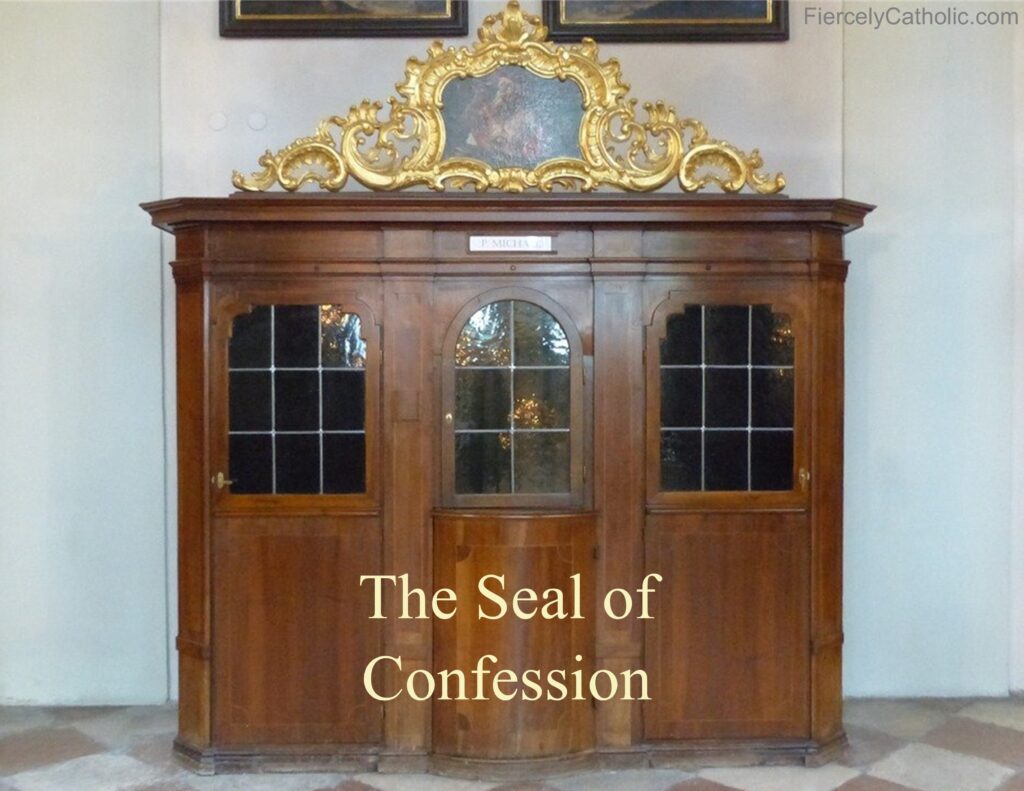
The Sacrament of Reconciliation allows Catholics to confess their most serious and embarassing sins to a priest in a sacred and safe environment.
The priest is the minister of the sacrament but Jesus is the one who forgives the sins, so the priest has no right to reveal what he hears and would be automatically excommunicated if he did.
This seal can never be broken, infringed, or dishonored for any reason, even under threat of imprisonment or death.
Anyone who overhears or translates what is said during the sacrament is also bound by the seal of confession.
The seal of confession is also known as the sacramental seal or seal of the confessional.
The priest is committed to secrecy:
Complete freedom in seeking God’s mercy:
Given the delicacy and greatness of this ministry and the respect due to persons, the Church declares that every priest who hears confessions is bound under very severe penalties to keep absolute secrecy regarding the sins that his penitents have confessed to him. He can make no use of knowledge that confession gives him about penitents’ lives. This secret, which admits of no exceptions, is called the “sacramental seal,” because what the penitent has made known to the priest remains “sealed” by the sacrament.
Catechism of the Catholic Church 1467
What is said in the confessional stays in the confessional:
The seal encourages people to seek forgiveness:
One who slanders reveals secrets, but a trustworthy person keeps a confidence.
Proverbs 11: 13
The seal of confession is a solemn committment:
Nothing must stand in the way of this sacred encounter with Jesus:
Threats to the seal of confession threaten the sacrament:
First of all, it must be emphasized that nothing is more personal and intimate that this sacrament, in which the sinner stands alone before God with his sin, repentance and trust. No one can repent in his place or ask forgiveness in his name. There is a certain solitude of the sinner in his sin, and this can be seen dramatically represented in Cain with sin “crouching at his door,” as the Book of Genesis says so effectively, and with the distinctive mark on his forehead; in David, admonished by the prophet Nathan; or in the prodigal son when he realizes the condition to which he has reduced himself by staying away from his father and decides to return to him. Everything takes place between the individual alone and God. But at the same time one cannot deny the social nature of this sacrament, in which the whole church-militant, suffering and glorious in heaven- comes to the aid of the penitent and welcomes him again into her bosom, especially as it was the whole church which had been offended and wounded by his sin. As the minister of penance, the priest by virtue of his sacred office appears as the witness and representative of this ecclesial nature of the sacrament.
Pope John Paul II, Reconciliation and Penance, December 2, 1984
Priests have died protecting the seal of confession:
The Truth, Goodness, and Beauty of the Catholic Church
It is right and just to give God praise:
Don’t miss a post. Learn more about the Catholic Church and strengthen your Catholic faith.
Find more Fiercely Catholic video issues here.
Subscribe here.
